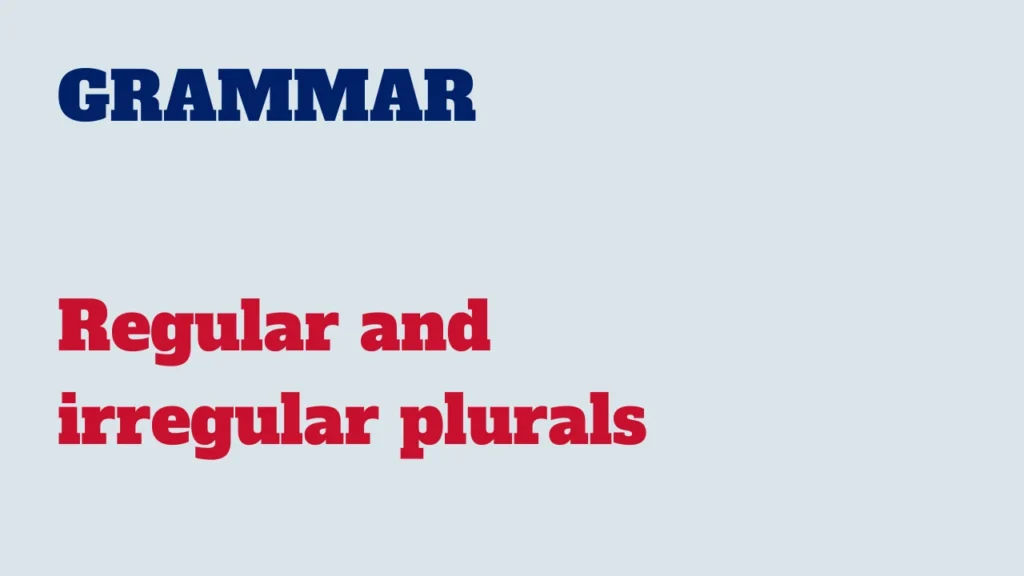One of the fundamental aspects of English grammar is understanding how nouns change when referring to more than one. Plurals can be formed in two main ways: through regular plurals and irregular plurals.

In this grammar lesson, we’ll explore the rules for forming regular and irregular plurals, providing examples and insights to help English learners navigate this aspect of the language effectively.
Regular plurals:
Regular plurals typically follow a straightforward pattern by adding “-s” or “-es” to the singular form of a noun. Most nouns fall into this category.
Examples:
- Cat → Cats
- Dog → Dogs
- Dish → Dishes
Forming regular plurals:
1. Add “-s” to Most Nouns:
- Book → Books
- Pen → Pens
2. Add “-es” to Nouns Ending in -s, -x, -z, -sh, or -ch:
- Box → Boxes
- Bus → Buses
- Dish → Dishes
Irregular plurals:
Irregular plurals, on the other hand, do not follow the standard rules for forming plurals. They often involve a change in the word’s spelling.
Examples:
- Man → Men
- Child → Children
- Tooth → Teeth
Forming irregular plurals:
1. Changing the vowel:
- Foot → Feet
- Goose → Geese
- Tooth → Teeth
2. Changing the consonant:
- Woman → Women
- Mouse → Mice
- Knife → Knives
Mastering regular and irregular plurals is crucial for constructing grammatically correct sentences in English. Regular plurals follow predictable patterns, while irregular plurals require memorization. Practice consistently to enhance your proficiency in using plurals accurately, and soon, it will become second nature. Happy learning!



